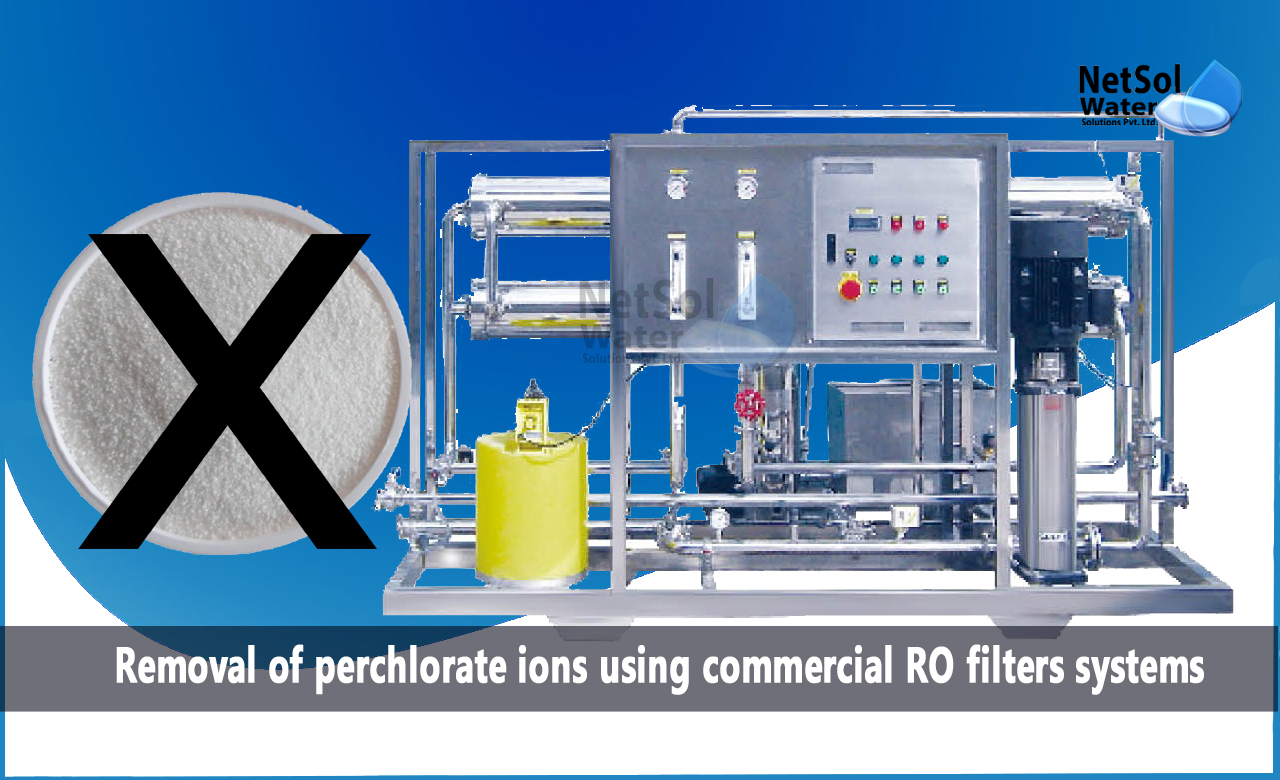Perchlorate is a common water contaminant that can pose a health risk to humans. It is commonly found in groundwater and surface water sources, particularly in areas where there has been military or industrial activity. Commercial reverse osmosis (RO) water filters have been shown to effectively remove perchlorate ions from water sources.
Here in this blog, we are going to discuss the removal of perchlorate ions using commercial RO filter systems.
What are perchlorate ions?
Perchlorate ions are an inorganic compound consisting of a perchlorate anion and a cation. Perchlorate is a naturally occurring and man-made chemical used in rocket fuel, fireworks, and fertilizers. It can enter the environment through the improper disposal of industrial and military waste, as well as through the use of fertilizers and other products containing perchlorate.
Health risks associated with perchlorate exposure
Perchlorate exposure can lead to health risks, particularly for infants and pregnant women. It can interfere with the thyroid gland's ability to produce hormones, which can lead to developmental delays in infants and fetuses. Exposure to perchlorate can also increase the risk of thyroid cancer and affect the metabolic rate of adults.
How do commercial RO filter systems remove perchlorate ions?
Commercial RO filter systems use a semipermeable membrane to remove impurities, including perchlorate ions, from water. The process involves forcing water through the membrane, which removes contaminants based on their size and charge. Perchlorate ions have a negative charge and are typically larger than other common contaminants, such as bacteria and viruses. As a result, they can be effectively removed using a commercial RO filter system.
Factors affecting perchlorate removal efficiency
The efficiency of perchlorate removal using commercial RO filter systems can be affected by several factors, including the concentration of perchlorate in the water source, the type of membrane used, and the flow rate of the water. The concentration of perchlorate in the water source is important because higher concentrations require more time and energy to remove. The type of membrane used can also affect the efficiency of perchlorate removal, as some membranes are more effective than others. Finally, the flow rate of the water can affect the efficiency of perchlorate removal, as slower flow rates typically result in more thorough removal.
Conclusion
In conclusion, commercial RO filter systems have been shown to be effective in removing perchlorate ions from water sources. This is important because perchlorate exposure can pose significant health risks, particularly for infants and pregnant women. By removing perchlorate ions from water sources, commercial RO filter systems can help ensure that drinking water is safe and free from harmful contaminants. Factors such as the concentration of perchlorate in the water source, the type of membrane used, and the flow rate of the water can all affect the efficiency of perchlorate removal using commercial RO filter systems. Overall, the use of commercial RO filter systems can help protect public health and ensure that water sources are safe and free from contaminants.
For any other support, inquiries, or product purchases, call on +91-9650608473 or email at enquiry@netsolwater.com



